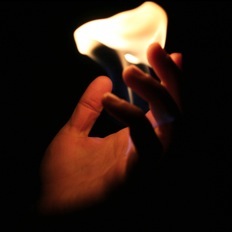 There is a reason why our bodies sense extremely hot temperatures as pain: extreme heat kills skin cells. How intense the heat is and how long the skin is exposed determines the depth of the injury to the skin. You can be “burned” not only by heat, but also by chemicals.
There is a reason why our bodies sense extremely hot temperatures as pain: extreme heat kills skin cells. How intense the heat is and how long the skin is exposed determines the depth of the injury to the skin. You can be “burned” not only by heat, but also by chemicals.
You likely have heard of “degrees” of burns. Burns are classified by the depth of injury, which helps determine how they are treated:
1st Degree: Superficial—skin red, no blisters
2nd Degree: Partial thickness skin damage—blisters
3rd Degree: Full thickness skin damage—skin white and leathery
4th Degree: Like third degree with deeper damage (e.g. tendons, joints, bone)
Initial treatment includes removing the source of burn and keeping it clean. Burned areas are at risk for contractures (joints become stiff and can’t move as well) and infection. Burns covering a large amount of body surface area require hospitalization.
1st Degree (superficial) burns are treated with “comfort care,”using pain relievers applied to the skin and/or taken by mouth. These burns usually heal within a week.
2nd Degree (partial thickness) burns require more care. Your hand and forearm might be splinted in a protective position to prevent later stiffness. Frequent dressing changes and topical antibiotics might be used to care for the wounds, which likely will heal within a few weeks. Some 2nd degree burns require surgery.
3rd Degree (full thickness) burns can be serious. These usually require surgery, as dead skin needs to be removed and replaced with skin grafts. Your surgeon will decide when to do this based on certain factors, including the size and location of the burns. Your hand is splinted temporarily until the graft has healed enough to allow motion safely (usually after a few weeks). If a burn is circumferential--or all the way around your arm or hand--it might be too constrictive (like a rubber band) and might require surgery.
Unfortunately, many patients with burn injuries require more than one operation; some burned hands develop contractures months or years after the original injury. You and your hand surgeon will establish a long-term plan.